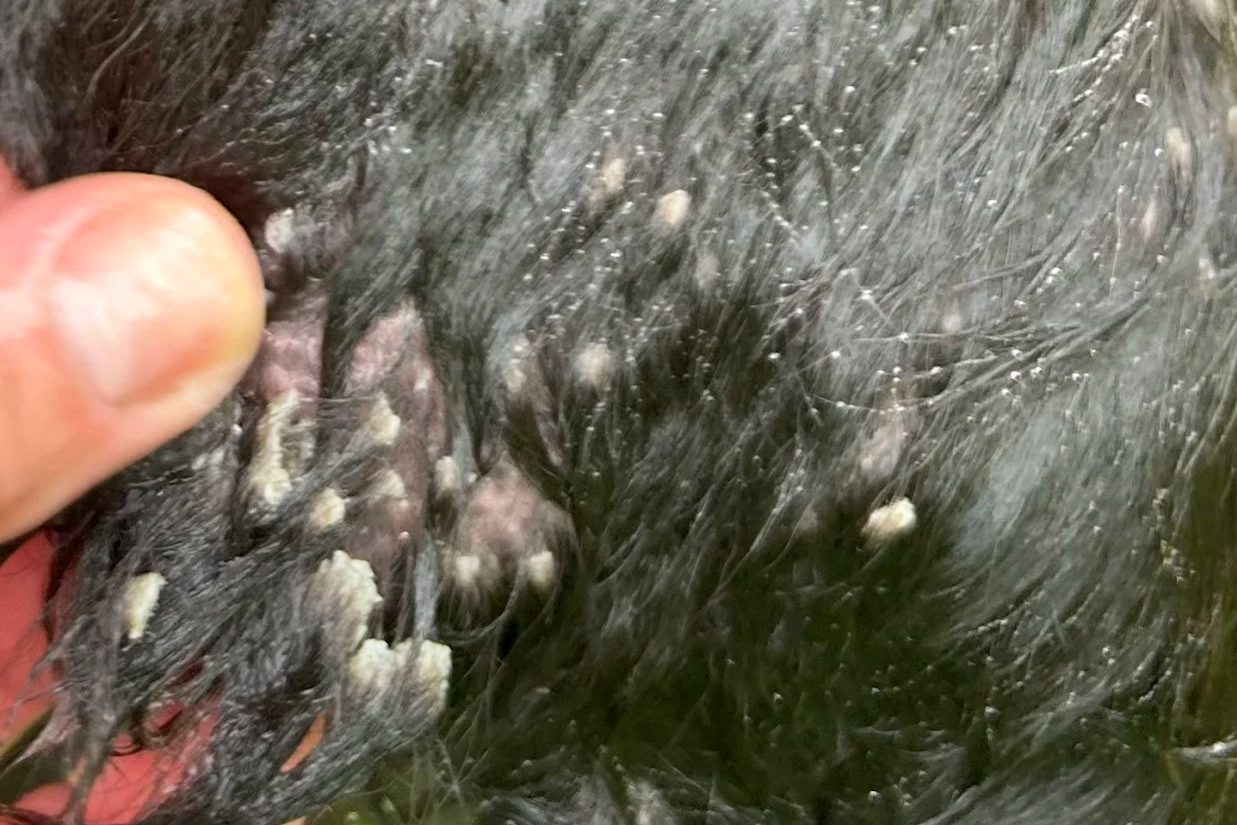How to Prevent and Treat Rain Rot in Farm Animals: A Guide for Caregivers
Rain rot, also known as dermatophilosis, is a common bacterial skin infection in farm animals, especially during wet or humid conditions. Though frequently seen in horses, cows, goats, and sheep can also develop this painful condition. While many are aware of rain rot's impact on animals, it’s important to recognize that it is contagious to humans as well, despite common misconceptions. I learned this firsthand at my cow rescue when I contracted rain rot from a sick calf, after being told by a veterinarian that it wasn’t contagious.
Here, we’ll discuss the ways you can prevent rain rot, how to identify and treat it, and the risks for humans who care for infected animals.
What Is Rain Rot?
Rain rot is caused by the bacteria *Dermatophilus congolensis*, which thrives in moist, warm conditions. The bacteria enter through small breaks or weakened areas in the skin, leading to scabs, lesions, and sometimes hair loss. It is most commonly seen after prolonged exposure to rain, muddy environments, or poor drainage in pastures.
How to Prevent Rain Rot in Farm Animals
Prevention is key when it comes to managing rain rot. By making simple adjustments to your farm's routine, you can minimize the risk of this condition spreading through your herd.
Shelter and Proper Drainage: Ensure that animals have access to dry shelter, especially during rainy seasons. Providing clean, dry bedding and creating good drainage around barn areas and pastures can help reduce moisture buildup.
Maintain Grooming Practices: Regularly groom your animals, particularly those with long or thick coats, as matted fur and damp hair can trap moisture against the skin. Pay special attention to areas prone to rain rot, such as the back, shoulders, and neck.
Use Rain-Resistant Blankets: If your animals wear blankets, choose breathable, waterproof varieties. Wet blankets can trap moisture and create the perfect environment for bacterial growth.
Control Parasites: External parasites, like ticks and flies, can create skin abrasions, making animals more vulnerable to infections like rain rot. Regularly check for and treat infestations.
Quarantine New or Sick Animals: Always isolate new arrivals or animals showing signs of illness until they are thoroughly evaluated and treated if necessary. This minimizes the risk of spreading rain rot or other infectious diseases.
Can Humans Contract Rain Rot?
While rain rot is generally considered an animal-specific infection, it can be transmitted to humans. This condition, often mistaken for a non-contagious issue, is zoonotic—meaning it can pass between animals and humans under certain conditions. Human infection occurs when the bacteria enter through cuts, scrapes, or broken skin. Those handling sick animals, especially with bare hands, risk developing skin lesions similar to those seen in affected animals. How do I know this, you may be wondering…Because I caught severe rain rot from a sick calf we brought to the Tennessee Cow Rescue. Part of his treatment was regular baths, where we kept the soap on for 20 minutes. Since he was only two weeks old, I held him during these baths, and I remained wet during the waiting time for soap activation. Within days, both my daughter and I came down with it even though the vet told me it wasn’t contagious.
Signs of Rain Rot in Humans:
Red, irritated, or inflamed patches of skin.
Small, crusted pustule sores or scabs that itch and, speaking from experience, become painful.
In some cases, a rash resembling that of eczema or contact dermatitis.
If you suspect you’ve contracted rain rot, it’s essential to consult with a healthcare provider for a diagnosis and treatment.
Treatment for Rain Rot in Animals
Fortunately, rain rot is treatable with the right approach. Early intervention is crucial to prevent the infection from worsening or spreading.
Clean and Dry the Affected Area: Gently wash the infected area with an antibacterial shampoo or solution, such as chlorhexidine, iodine, or diluted betadine. Allow the area to dry thoroughly before applying any further treatments.
Remove Scabs Carefully: Once softened by washing, gently remove scabs, as the bacteria live underneath them. Be sure to wear gloves while doing this to protect yourself and prevent further infection spread.
Topical Antibiotics: After cleaning the area, apply a topical antibiotic ointment to promote healing and kill remaining bacteria.
Keep the Animal Dry: Keep the infected animal in a dry, clean environment during treatment, and avoid exposure to wet or muddy conditions until the infection has cleared.
Oral or Injectable Antibiotics: In severe cases, where topical treatments aren’t enough, your veterinarian may prescribe oral or injectable antibiotics to help clear the infection.
Treating Rain Rot in Humans
If you suspect that you’ve contracted rain rot from an animal, follow these steps for treatment:
Wash the Area Thoroughly: Clean the affected skin with antibacterial soap and warm water.
Apply Antibiotic Creams: Use over-the-counter antibiotic ointments on the lesions to prevent further infection.
Consult a Doctor: If the infection doesn’t clear up with basic home care, or if it worsens, see a healthcare professional. They may prescribe a stronger topical treatment or oral antibiotics.
Wear Protective Gear: When handling infected animals, always wear gloves, long sleeves, and protective clothing to reduce direct skin contact. This can help prevent the bacteria from entering through cuts or abrasions.
Final Thoughts
Rain rot is a preventable and treatable condition, but it’s essential to recognize that it can affect both animals and humans. Whether you’re caring for cows, horses, or other livestock, maintaining clean, dry environments and good hygiene practices can go a long way in protecting both your animals and yourself. If you suspect rain rot in your herd or in yourself, early treatment is key to a speedy recovery.
Stay safe, and always wear protection when handling animals showing signs of infection.



